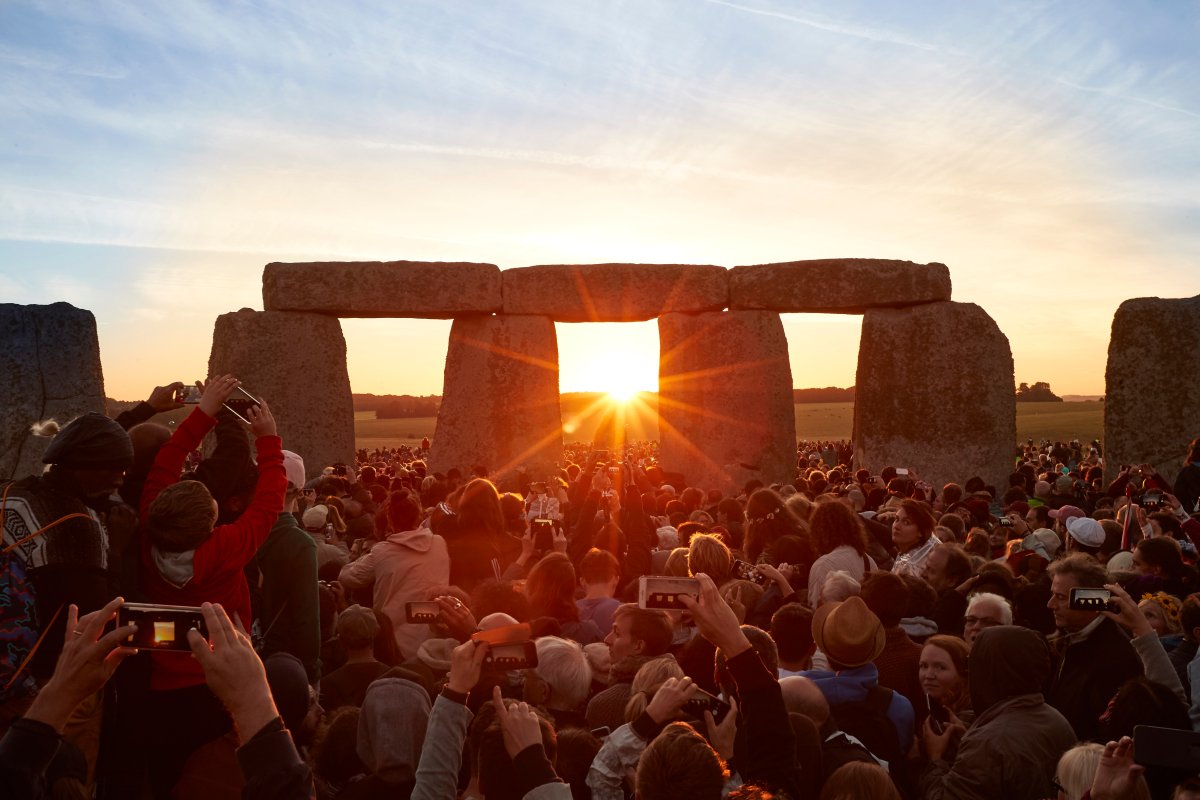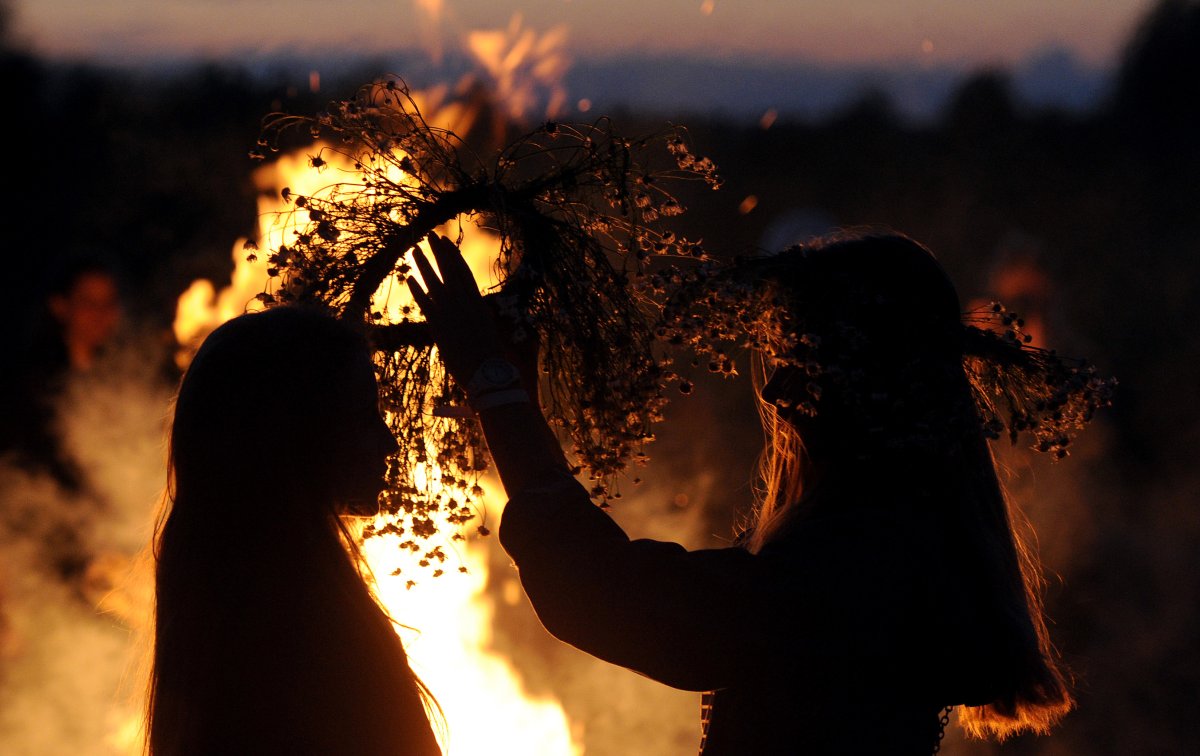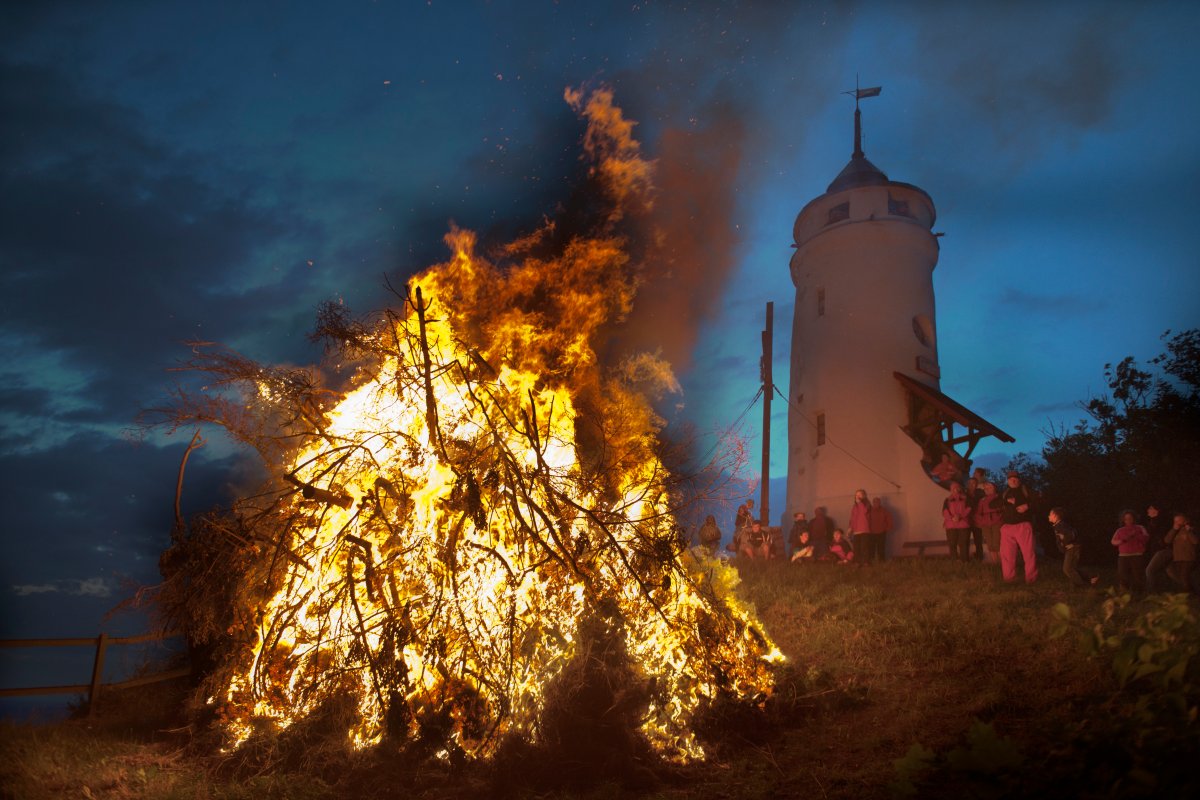It’s the longest day of the year for people in the Northern Hemisphere, causing many to mark the summer solstice with pagan rituals, fire dancing and even jumping naked into a lake.

The event may also be a bittersweet feeling for many, as after the summer solstice, the days start getting shorter.
Here’s everything you need to know about the 2018 summer solstice and how people around the world are celebrating.
What is the summer solstice?
Following the winter solstice on Dec. 21, the Northern Hemisphere begins to get more sunlight as the earth’s axis starts slowly tilting more toward the sun.
The summer solstice happens when the tilt of the Earth’s axis is most inclined towards the sun directly above the Tropic of Cancer.
WATCH: In 2016 the ‘Strawberry’ moon lit up summer solstice for first time in 49 years

During the cosmic event, “the sun shines directly on the Northern Hemisphere and indirectly on the Southern Hemisphere,” NASA explained.
The summer solstice happens every year between June 20 and June 22 when the sun reaches its highest level in North Hemisphere; the exact amount of daylight varies from city to city, but all places north of the equator will have at least 12 hours of daylight.
When is it?
The summer solstice in the northern hemisphere happens June 21, and this year it officially took place at 6:07 am ET.
What does it have to do with Stonehenge?
The purpose of Stonehenge, which was built around 5,000 years ago, still remains a mystery. However, there are theories that it was designed to align with the sun, according to Salisbury Stonehenge Tours. During the summer solstice, the sun rises over the structure’s Heel Stone and hit the Alter Stone in the centre.
This is why every year thousands of people flock to the prehistoric site to see the sun rise above it.
Pagan rituals for the summer solstice
In other parts of the world, such as in Europe, people celebrate the event with dancing, eating, drinking and even naked running.
In Russia and Ukraine, it’s a pagan celebration more commonly known as Ivan Kupala Day, which usually takes place shortly after the summer solstice. Teenagers and young adults also jump over bonfires, holding hands with a potential suitor as a courtship ritual.
“If you jump over the fire, and a boy and a girl are holding hands and they’re still holding hands when they’ve jumped over, they’ll get married,” Natalie Kononenko, a professor and the Kule Chair in Ukrainian Ethnography Arts, at the University of Alberta told TIME.
Young women also wear floral wreaths on their heads until later on in the festivities when they take the headpieces off, light candles in them and sail them down a stream.
Scandinavians celebrate one of their main holidays around the summer solstice, referred to as Midsummer, which has roots in pagan rituals involving bonfires, fertility and folk dancing.
People in Austria light hundreds of fires in the Alps, a medieval tradition to mark the longest day of the year.
And in Latvia, the summer solstice tradition is to head to the countryside, start a bonfire and stay up all night waiting for the sun to come up. Women pick flowers to make into crowns for their heads, while men are supposed to strip naked and jump into a nearby lake or river, according to the BBC.
- Gas prices surge in some parts of Canada. What’s causing pain at the pumps?
- Roll Up To Win? Tim Hortons says $55K boat win email was ‘human error’
- Ontario premier calls cost of gas ‘absolutely disgusting,’ raises price-gouging concerns
- Canada’s income gap is growing. Will Budget 2024 help affordability?







Comments